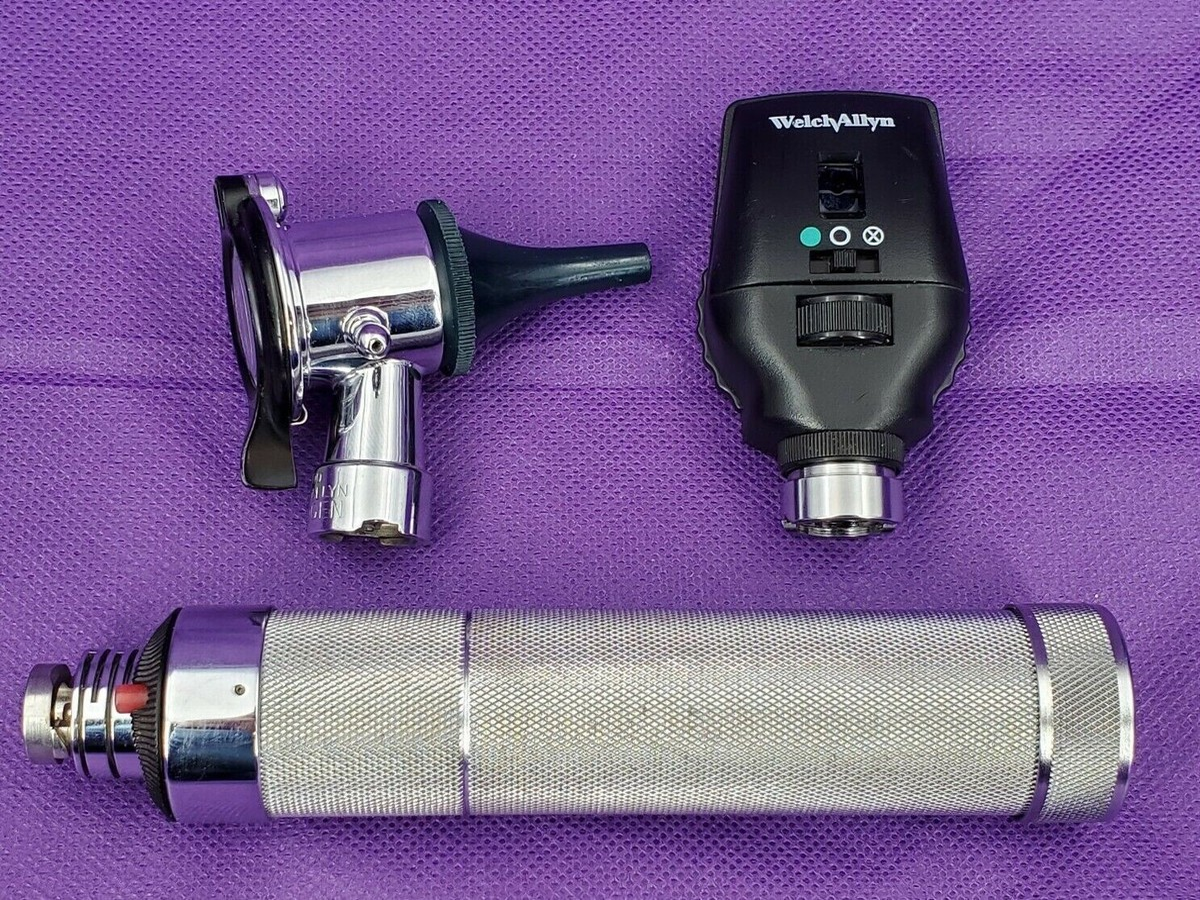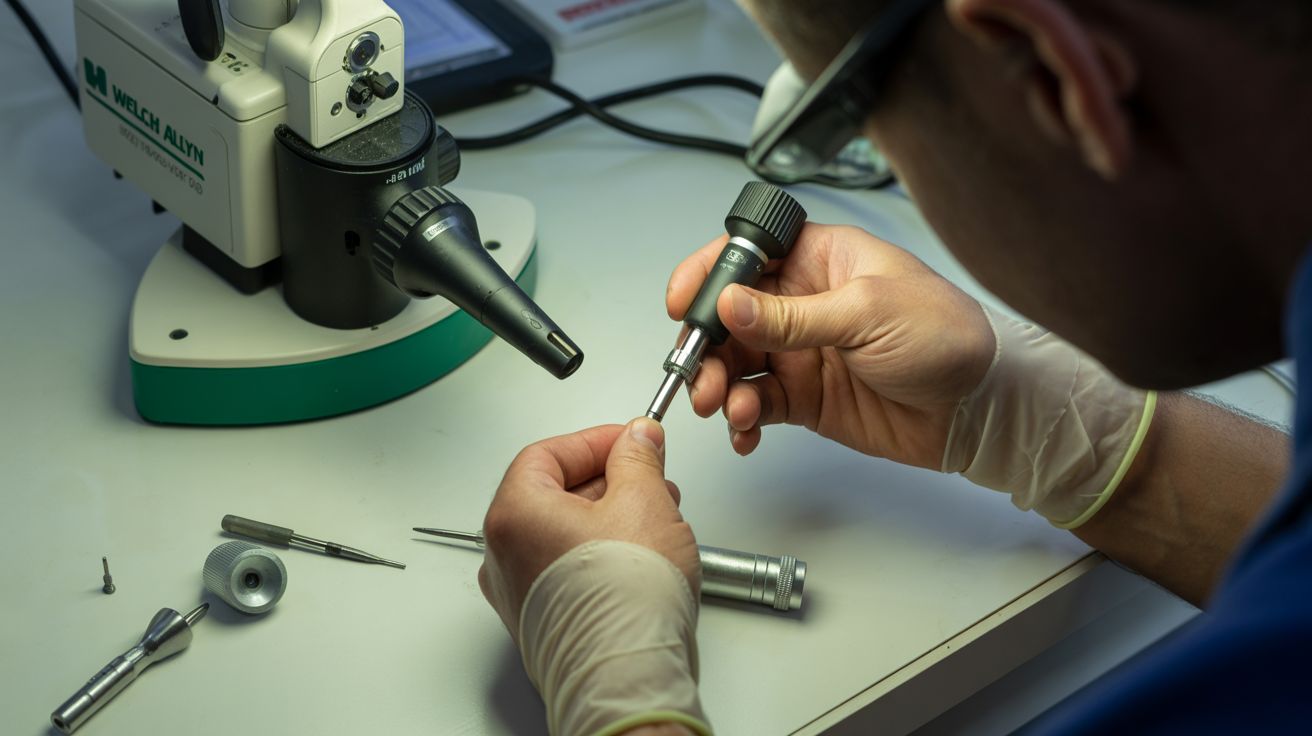Overview
The Welch Allyn MacroView Otoscope represents a significant advancement in diagnostic otoscopy, offering biomedical equipment technicians and clinicians a viewing area approximately three times larger than standard otoscopes. However, like all precision medical instruments, the MacroView can experience operational challenges that require systematic troubleshooting. This comprehensive guide addresses the most frequently encountered issues with the MacroView Otoscope, providing you with evidence-based diagnostic procedures and repair solutions.
As a biomedical equipment technician, your role in maintaining these devices is critical to ensuring continuous clinical operation. The MacroView Otoscope (models 23820, 23810, and digital variants) incorporates advanced optical technology and LED illumination systems that, while robust, require specific troubleshooting approaches. This guide draws from manufacturer specifications, field service reports, and established biomedical engineering protocols to provide actionable solutions for common failure modes.
Understanding the MacroView's architecture is essential for effective troubleshooting. The device consists of several key subsystems: the optical assembly with MacroView lens technology, the LED illumination system, the power delivery mechanism (typically 3.5V rechargeable or alkaline battery handles), and in digital models, the imaging sensor and USB interface. Failures can occur in any of these subsystems, and proper diagnosis requires methodical testing to isolate the root cause.
Common Problems Reference Table
| Problem | Symptoms | Likely Cause | Solution |
|---|---|---|---|
| Complete Power Failure | No illumination when activated; device unresponsive to power button | Depleted battery, corroded contacts, faulty power button assembly, or internal circuit failure | Test with known-good power handle; inspect battery contacts for corrosion; verify power button continuity; replace handle if necessary |
| Intermittent Illumination | Light flickers or cuts out during examination; inconsistent brightness | Loose connection between head and handle, worn contact pins, or failing LED driver circuit | Clean threaded connection with isopropyl alcohol; inspect contact pins for damage; test with alternate handle to isolate fault location |
| Dim or Discolored Light Output | Reduced brightness compared to baseline; yellowish or uneven illumination | LED degradation (rare), optical pathway contamination, or insufficient power delivery | Clean optical surfaces with lens tissue; verify battery voltage (should be ≥3.0V under load); recalibrate white balance on digital models |
| Optical Distortion or Blur | Image appears out of focus, cloudy, or has visible artifacts | Contaminated lens surfaces, misaligned optical elements, or damaged MacroView lens assembly | Clean all optical surfaces per manufacturer protocol; inspect for physical damage; if persistent, optical assembly may require factory service |
| Digital Imaging Failure | No image capture, frozen display, or USB connection errors (digital models only) | Software driver issues, USB cable failure, imaging sensor malfunction, or computer compatibility problems | Reinstall Welch Allyn Viewer Utility; test with different USB port/cable; verify system requirements (Windows XP SP2 or later); update USB drivers |
| Specula Attachment Issues | Specula tips do not secure properly or fall off during use | Worn specula adapter ring, incompatible specula, or damaged mounting mechanism | Verify use of Welch Allyn-compatible specula (REF 52234 series); inspect adapter for cracks; replace if retention mechanism is compromised |
| Overheating During Extended Use | Device becomes excessively warm; automatic shutdown occurs | Thermal protection activation due to prolonged continuous operation or blocked ventilation | Adhere to duty cycle (maximum 2 minutes on, 10 minutes off); ensure ventilation ports are clear; allow cooling before resuming use |
| Battery Drain Issues | Rapid battery depletion; insufficient runtime between charges | Battery end-of-life, parasitic drain, or charger malfunction | Test battery capacity with load tester; verify charger output voltage; replace battery if capacity <80% of rated; use only Welch Allyn chargers (REF 71140) |
| Physical Damage to Housing | Cracks, loose components, or rattling sounds during operation | Impact damage, material fatigue, or improper handling | Inspect for structural integrity; test electrical safety (leakage current, ground continuity); replace housing if compromised; document incident per facility protocol |
| White Balance Calibration Error | Color cast in digital images; inaccurate color reproduction | Uncalibrated sensor after lamp replacement or software reset | Perform white balance calibration: shine on white surface, insert paperclip into reset port for 3 seconds until LED blinks; verify in Viewer software |
⚠ Critical Safety Precautions
- Electrical Safety Testing: After any repair involving electrical components, perform comprehensive electrical safety testing including ground continuity (<0.2Ω), insulation resistance (>10MΩ at 500VDC), and leakage current testing per IEC 60601-1 standards. Patient leakage current must not exceed 100µA for Type BF equipment.
- Power Disconnection: Always disconnect the device from power sources before performing any internal inspection or repair. For rechargeable handles, remove the battery. Capacitors in LED driver circuits may retain charge—allow 5 minutes for discharge before handling internal components.
- Optical Safety: Never look directly into the LED illumination source at close range, as the high-intensity light can cause temporary vision impairment. When testing illumination, point the device at a diffuse surface.
- Contamination Control: Treat all devices as potentially contaminated with biological material. Wear appropriate PPE (gloves, safety glasses) during inspection and repair. Clean and disinfect per your facility's infection control protocols before and after servicing.
Legal Disclaimer: This troubleshooting guide is provided for informational purposes only and is intended for use by qualified biomedical equipment technicians. Always consult manufacturer documentation and follow your facility's established procedures and quality management system requirements. Unauthorized repairs may void manufacturer warranties and violate regulatory requirements.



